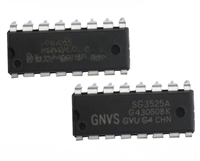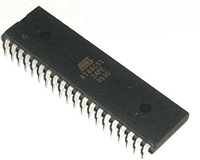ARE1-xxx0-00000 Data Sheet
High Power Infrared Emitting Diodes
Storage:
where:
T = ambient temperature (°C)
A
If the LEDs are exposed in an ambient environment for too
long, the plating might be oxidized, thus affecting its
solderability performance. As such, keep unused LEDs in a
sealed MBB with desiccant or in a desiccator at <5% RH.
R
= thermal resistance from LED junction to ambient
θJ-A
(°C/W)
I = forward current (A)
F
V
= maximum forward voltage (V)
Fmax
Application Precautions
The complication of using this formula lies in T and R
.
θJ-A
A
The drive current of the LED must not exceed the
maximum allowable limit across temperature as stated
in the data sheet. Constant current driving is
Actual T is sometimes subjective and hard to determine.
A
R
varies from system to system depending on design
θJ-A
and is usually not known.
recommended to ensure consistent performance.
The circuit design must cater to the whole range of
Another way of calculating T is by using the solder point
temperature, TS as follows:
J
forward voltage (V ) of the LEDs to ensure the intended
F
drive current can always be achieved.
The LED exhibits slightly different characteristics at
different drive currents, which may result in a larger
variation of performance (meaning: intensity,
wavelength, and forward voltage). Set the application
current as close as possible to the test current to
minimize these variations.
T = T + R
× I ×V
θJ-S F Fmax
J
S
where:
T = LED solder point temperature as shown in
S
Figure 17 (°C)
R
= thermal resistance from junction to solder point
θJ-S
Do not use the LED in the vicinity of material with sulfur
content or in environments of high gaseous sulfur
compounds and corrosive elements. Examples of
material that might contain sulfur are rubber gaskets,
room-temperature vulcanizing (RTV) silicone rubber,
rubber gloves, and so on. Prolonged exposure to such
environments may affect the optical characteristics and
product life.
(°C/W)
I = forward current (A)
F
V
= maximum forward voltage (V)
Fmax
Figure 17: Solder Point Temperature on PCB
Avoid a rapid change in ambient temperature,
especially in high-humidity environments, because it
causes condensation on the LED.
If the LED is intended to be used in harsh or outdoor
environment, protect the LED against damages caused
by rain water, water, dust, oil, corrosive gases, external
mechanical stresses, and so on.
Thermal Management
T can be easily measured by mounting a thermocouple on
S
the soldering joint as shown in Figure 17, while R
is
θJ-S
The optical, electrical, and reliability characteristics of the
LED are affected by temperature. Keep the junction
provided in the data sheet. Verify the T of the LED in the
S
final product to ensure that the LEDs are operating within all
maximum ratings stated in the data sheet.
temperature (T ) of the LED below the allowable limit at all
J
times. T can be calculated as follows:
J
T = T + R
× I × V
F Fmax
Eye Safety Precautions
J
A
θJ-A
LEDs may pose optical hazards when in operation. Do not
look directly at operating LEDs because it might be harmful
to the eyes. For safety reasons, use appropriate shielding or
personal protective equipment.
Broadcom
ARE1-xxx0-DS100
9






 SG3525资料手册详解:SG3525参数分析、引脚说明、应用介绍
SG3525资料手册详解:SG3525参数分析、引脚说明、应用介绍

 AT89C51单片机资料手册详细解析及应用示例
AT89C51单片机资料手册详细解析及应用示例

 CP2102资料手册解读:CP2102引脚说明、关键参数分析
CP2102资料手册解读:CP2102引脚说明、关键参数分析

 资料手册解读:UC3842参数和管脚说明
资料手册解读:UC3842参数和管脚说明
